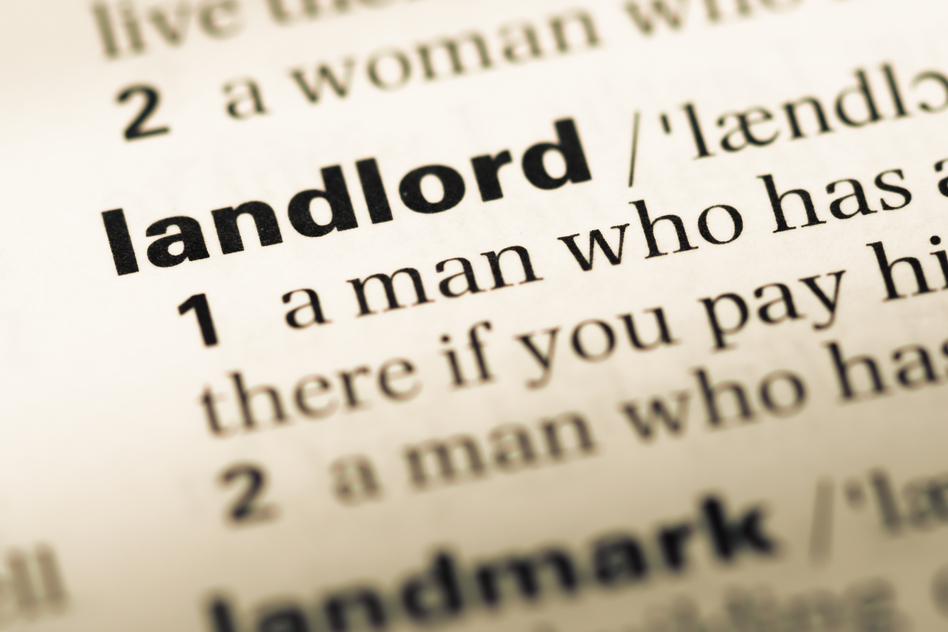You’ve probably noticed it about many financial services products that there’s often no single straightforward answer – and that’s true when you ask what landlord insurance covers. A lot depends on the type of landlord you are, the type of property that you own and, each insurer’s own definition of what their cover entails.
Before considering just what landlords’ insurance covers, it may be helpful to understand why this specialist insurance product is needed in the first place. And that also means taking a look at the role of the landlord with a buy to let business.
So, why is specialist landlord insurance necessary? Why won’t standard home building and contents cover suffice, for example?
Distinguishing between landlord insurance and standard home insurance
Owner-occupiers and landlords of buy to let property typically own homes that are to all intents and purposes quite indistinguishable – but for the critical fact that one is the owner’s place of residence whilst the other is occupied by rent-paying tenants.
On the outside, therefore, there may be no great apparent difference, but on the inside there is. The same might be said of standard homeowners’ insurance and landlords’ insurance – on the outside they appear fairly similar, but it is on the inside that the real differences start to emerge.
Those differences help to explain why landlords cannot simply use one of the very many standard home insurance policies on the market to protect the bricks and mortar and the contents of residential property which is currently let to tenants.
What matters to insurers, of course, is the question of risk – what is the likelihood of the insured property suffering loss or damage and the insurer having to pay out on a claim as a result?
It is that calculation of risk which informs the price at which any insurer needs to pitch premiums for the cover in question since it is only from income by way of premiums that insurers have the funds to pay out on claims. Those funds are held in a “claims reserve” which must be sufficient for the settlement of future claims – and, as an article in the Insurance Business Magazine on the 11th of January 2023 insisted requires careful management.
Critical to that calculation of risk, as far as property insurance is concerned, is the use to which the premises are put:
- standard home building and contents insurance is designed to meet the risks faced by a typical property that is occupied on a more or less continuous basis by its owners;
- landlords’ insurance, on the other hand, is designed to meet the very different risks faced by a buy to let business, which relies upon rental income from the tenants occupying the premises – buy to let insurance (as landlord insurance is also called), therefore needs to protect the business uses to which the property is put.
That distinction is sufficiently critical that if you have arranged standard home insurance but in fact let the property to tenants, any claim you subsequently make may be rejected out of hand by the insurer.
Who is a landlord?
Landlords fall into two broad groups:
- the so-called professional who makes a conscious decision to earn a livelihood from buying to let; and
- the “accidental” landlord who finds him or herself becoming a landlord almost by chance, after inheriting a property or otherwise deciding to let out a home they previously occupied themselves.
Whilst there is no single profile representing the average landlord, it might be helpful to look at some of the most common profile features to gain a better understanding of why landlord insurance may be needed and just what it needs to cover.
The landscape in which today’s landlord must operate is subject to a welter of economic and legislative pressures and changes – many of which are discussed in an article in the Consumer Association’s Which? magazine on the 29th of December 2022 and include some of the following significant developments in the year ahead:
- a long-awaited Renters Reform Bill could be finally enacted in 2023, bringing with it a completely different balance to the relationship between landlord and tenant;
- significant reductions in the thresholds at which Capital Gains Tax (CGT) becomes payable – and which will clearly impact those landlords intending to sell previously let property;
- potentially further increases in the interest rates attached to buy to let mortgages;
- increasing demand for accommodation in the private rented sector;
- the continued pressures of inflation and the rising cost of living could lead to more tenants defaulting on their rental payments;
- energy efficiency standards within the private rental sector become increasingly stringent; but
- despite the steadily escalating property prices, landlords might still be able to snap up a bargain.
The sheer diversity of these challenges for today’s landlord means that the group of property owners as a whole is disparate and reflects the wide spectrum of opportunities for operating a buy to let business. But they all share an interest in
protecting the property in which they have invested. And the best way to do that is by way of landlord insurance.
The principle of landlord insurance – and the cover it provides
What does landlord insurance cover? Just as there are many different types of landlord insurance, so the answer reflects those differences – making it important to identify the particular form of cover that meets your individual needs and circumstances.
Put most simply, landlord insurance protects your buy to let business. It protects the principal business asset – the property and its contents – and many of the additional risks and liabilities that go with being a landlord.
The role of insurance in protecting your business is critical and distinguishes landlord insurance, for instance, from the standard forms of home building and contents insurance typically arranged by home owner-occupiers
As we have explained, the risks and perils are different when your property is let to tenants and, so, specialist landlord insurance is required, rather than any standard form of home insurance.
Although the cover may appear similar, therefore, you still need to inform any mortgage lender with an interest in your property that it is being let to tenants and not occupied by you as your residence.
If there is a permanent or long-term switch to the property’s use as let premises, you may need to change your mortgage, suggests the government-sponsored Money Advice Service.
You may also need to bear in mind that some insurers decline cover on property let to certain types of tenant – such as benefits claimants, asylum seekers or students. So, if these groups are among your target market of potential tenants, still more care is needed when selecting your landlord insurance – but be assured that the policies we arrange here at Cover4LetProperty allow for all types and categories of tenant.
With these important principles in mind, it is possible to take a closer look at how landlord insurance protects you. You should note that not all elements of the following cover come as standard in any given let property insurance policy, so it is important you understand what your policy cover entails:
Building insurance
- at the heart of any landlord insurance is likely to be the protection of the physical structure and fabric of the building and its contents;
- this is protection against potentially serious risks such as fire, subsidence, flooding, storm damage, escape of water, smoke damage, impacts, theft and vandalism – it is important to note, though, that policies vary widely and some risks may not be covered or may be subject to special conditions, depending on the insurer;
- typical examples are subsidence, especially if there has been past evidence of the problem, and flooding, if your property is in an area known to be vulnerable to such a risk (all our policies provide subsidence cover as standard);
- some, but by no means all, policies also offer cover against the risk of malicious damage caused by your tenants or their visitors – those arranged by us here at Cover4LetProperty incorporate such cover as standard;
- in any event, the total building sum insured needs to take into account a worst-case scenario in which your property is totally destroyed and has to be rebuilt – a valuation based on current reconstruction costs (rather than either the present market value, for instance, or the balance of your outstanding mortgage) which naturally fluctuate over time and may need to be updated with reference to the index of reconstruction costs maintained by the Royal Institute of Chartered Surveyors (RICS);
Trace and access insurance cover
- especially useful for landlords may be the inclusion of additional cover in respect of trace and access costs;
- you may have responded to your tenants’ request for emergency attention to a burst or leaking water pipe, for example, but the cost of the plumber you call out, the damage caused by his tracing the fault and accessing it (lifting floorboards or knocking the plaster off walls, for example) and the materials used in repairing the problem are not generally covered under the provisions of any cover for loss and damage caused by an escape of water;
- trace and access insurance cover offers precisely this indemnity;
Contents insurance
- although your tenants are of course responsible for insuring their own possessions and belongings, you may own items – especially in the common areas of the let property – which also need to be protected against the risks of loss or damage through appropriate landlord’s contents insurance;
Landlord liability insurance
- property insurance in general invariably incorporates indemnity for the owner’s public liabilities – in the case of the landlord this is likely to be an even more important safeguard;
- the landlord has a particular duty of care not only to members of the public, but more specifically to his tenants and their visitors – so, if you fail to take reasonable precautions to prevent their injury or loss, you may be faced with substantial claims for compensation by way of damages;
- if any individual suffers a personal injury or has their property lost or damaged as a result of the landlord’s negligence of his duty of care, the claim for compensation may assume substantial proportions (the more so if any injuries have proved fatal, of course);
- indemnity for landlord’s liability, therefore, typically starts at a minimum level of cover of £2 million – but cover for £5 million is by no means uncommon;
Employers’ liability insurance
- if you employ others to help run your buy to let business, the law requires – in all but a few exceptions – that you hold a minimum of £5 million employers’ liability cover in the event of an individual sustaining an injury or contracting an illness or other medical condition as a result of working for you;
- on occasion, this cover may be available as an optional extra to your landlord insurance or you may purchase it separately on a standalone basis;
Loss of rental income
- recognising that your buy to let property is first and foremost a business asset, there is a risk that any one of the risks you have insured against leaves the accommodation temporarily uninhabitable, so that the income stream of your business – the rent you would otherwise collect – is disrupted;
- landlord insurance may include compensation – or the provision of similar, alternative accommodation – for this loss of rental income pending any necessary repairs and reinstatement;
- the amount of compensation is typically limited to a maximum period or the limit may be calculated as a percentage of your total sum insured;
Unoccupied property insurance
- finally, you may need to bear in mind that insurers consider your let property to be at its most vulnerable when no one is living there – when otherwise minor maintenance problems may develop into serious emergencies and when the unoccupied building acts as a magnet for thieves, arsonists and other intruders;
- although you want to prevent lengthy voids – between one tenancy ending and before another one starts – periods during which your property stands unoccupied may be inevitable;
- if the property is unoccupied beyond a given number of days – typically between 30 and 45 consecutive days, but the precise interval varies from one policy to another – your insurer invariably reduces the extent of cover provided or may even regard the insurance policy to have lapsed altogether;
- in that instance, you may need to consider standalone unoccupied property insurance to maintain the full range of safeguards for your let property – you can read more about this subject in our Guide to Unoccupied Property.
What does landlords’ insurance cover?
A great many, varied risks and perils are likely to be encountered by practically any investor in buy to let property.
Buy to let property insurance offers common, core elements of protection whatever type of landlord you happen to be. But it is clear that there is scope for considerable variation in the precise scope and level of cover you purchase.
To help you negotiate this potential minefield and ensure that you secure the cover you need – at competitively priced premiums – you might want to consult specialist brokers such as ourselves here at Cover4LetProperty.
Standard home building and contents insurance is not an option if you are the landlord of buy to let property. If you let your property to tenants, it is important that you arrange suitable, purpose-designed landlord insurance.








